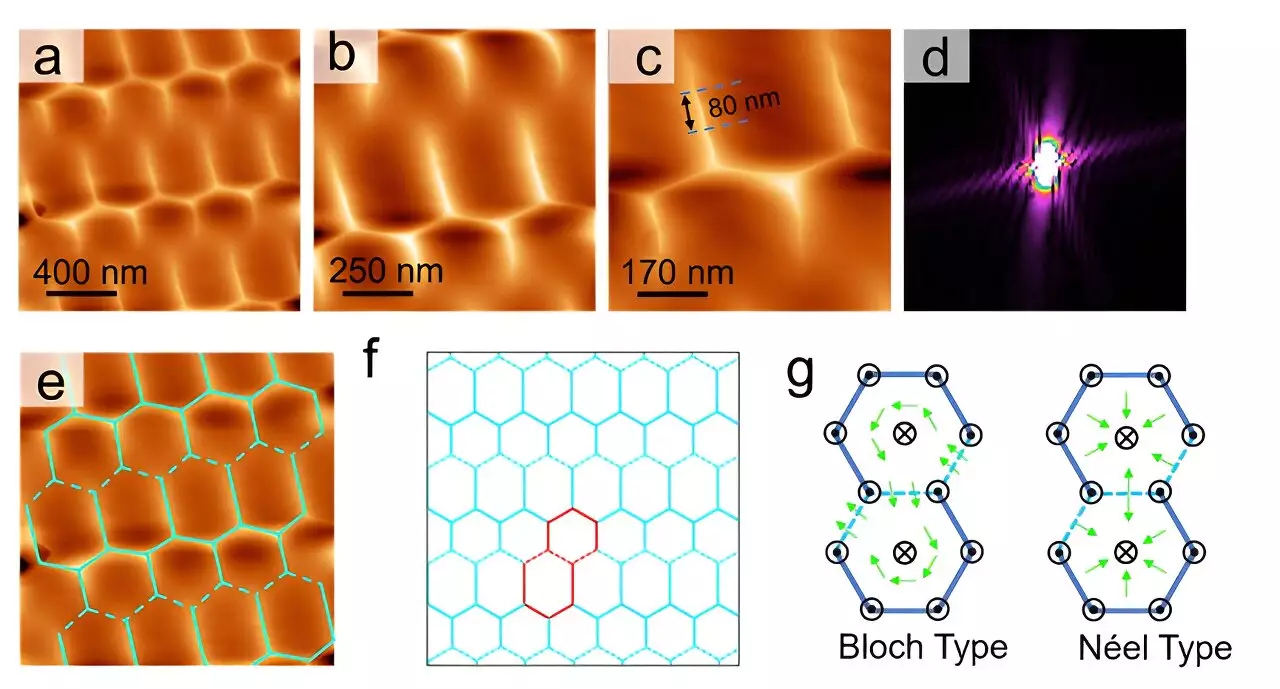Recent advancements in material science have unveiled the intrinsic magnetic properties of kagome lattices, which are complex two-dimensional structures that could potentially revolutionize our understanding of phenomena such as topological magnetism and superconductivity. A collaborative research team from China achieved a pivotal discovery, published in the journal Advanced Science, revealing the unique magnetic configurations present in the binary kagome crystal Fe3Sn2. This research marks a significant development, leveraging advanced techniques such as magnetic force microscopy (MFM) and electron paramagnetic resonance spectroscopy to explore the lattice dynamics at a microscopic level.
Kagome lattices, characterized by their distinctive geometric arrangement, ignite intrigue within the physics community due to their unusual electronic and magnetic properties. The interplay of their internal electron arrangement with the lattice structure contributes significantly to their functionality. These unique features enable kagome lattices to exhibit phenomena including flat bands, Dirac points, and exhibit potential for applications in quantum computing and high-temperature superconductivity. However, understanding the intrinsic magnetic behaviors within these structures has remained a critical yet elusive challenge until now.
The team, led by Prof. Lu Qingyou from the Hefei Institutes of Physical Science, in cooperation with Prof. Xiong Yimin from Anhui University, utilized state-of-the-art technology at the Steady High Magnetic Field Facility (SHMFF). Their investigation focused on the kagome lattice found in Fe3Sn2, revealing a complex magnetic array with a broken hexagonal configuration. This formation emerged as a result of competing forces between the lattice’s intrinsic symmetry and its directional magnetic characteristics.
Through meticulous Hall transport measurements, the researchers substantiated the existence of topologically distinct spin configurations within the material. Moreover, variable-temperature experiments elucidated the magnetic reconstruction process in the single crystal samples of Fe3Sn2. Contrary to earlier assumptions that suggested a first-order state transformation, findings indicated that the transition occurred through a second-order or weak first-order phase transition.
One of the most transformative outcomes of this research is the redefinition of the magnetic ground state in Fe3Sn2. Previously interpreted as a spin-glass state, the findings revealed it to be an in-plane ferromagnetic state. This shift in understanding prompts a reevaluation of existing knowledge about the magnetic behaviors within kagome lattices. The team also introduced a new magnetic phase diagram for the material, which provides a comprehensive framework for future research and experimentation.
Implications for Future Research
The profound implications of this study extend into various scientific realms. By employing the Kane-Mele model, the researchers successfully explained the emergence of the Dirac gap at low temperatures, discounting previous hypotheses related to the formation of skyrmions in these conditions. This discovery not only enriches the scientific community’s understanding of topological magnetic structures but also paves the way for innovations in quantum computing technology and enhanced high-temperature superconductors.
The research conducted by this Chinese team signifies a groundbreaking advancement in the field of condensed matter physics. With a clearer understanding of kagome lattices and their magnetic properties, the groundwork is laid for future explorations that may lead to new revolutionary technologies rooted in these fascinating materials.



Leave a Reply